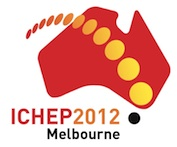Speaker
Dr
Silvestro Di Luise
(Eidgenoessische Tech. Hochschule Zürich (CH))
Description
The NA61/SHINE (SPS Heavy Ion and Neutrino Experiment) is a fixed-target experiment to study hadron production in hadron-nucleus and nucleus-nucleus
collisions at the CERN SPS.
The experimental apparatus is a large acceptance Magnetic Spectrometer complemented with Time-Of-Flight detectors and a Projectile Spectator Detector. Its excellent capability for particle identification and momentum determination, even in complex events, makes the NA61/SHINE experiment well suited for pursuing a reach physics program which consists of three main topics:
i) hadron-nucleus interactions: hadron production measurements for neutrino (T2K) and cosmic-ray (Pierre Auger Observatory) experiments
ii) nucleus-nucleus interactions: hadron production measurements to search for the critical point of strongly interacting matter and to study the properties of the onset of the deconfinement
iii) proton-proton and proton-nucleus interactions: measurement of inclusive and correlated yields of high pT hadrons to study their in-medium modifications
i) Second generation long baseline neutrino oscillation experiments, like T2K, do require a very good knowledge of neutrino fluxes which means a more precise measurements of the production cross sections of pions and kaons.
NA61/SHINE thanks to the large acceptance and particle identification in the forward region covers most of the phase space region of interest for T2K.
So far pi+ and K+ differential cross section in p+C interaction at 31 GeV/c have been measured and published. Such measurements contributed significantly to the T2K measurement of electron neutrino appearance (nu_mu->nu_e) which led to the first indication of a non zero mixing angle theta_13 and to the measurement of muon neutrino disappearance (nu_mu->nu_mu).
Preliminary results on K0_S production have been released as well. Precise knowledge of the neutral kaons cross section is in fact required for the accurate calculation of the nu_e and nu_e fluxes from K0_L->pi e nu_e decays.
Measured charged pions and kaons data provide also important input to improve hadron production models prediction needed for the study of air shower initiated by ultra-high-energy cosmic particles.
ii) and iii) NA61/SHINE aims to extend the NA49 ion program exploring a wider region of the phase diagram of strongly interacting matter within the range of thermodynamical variables (e.g. temperature and baryon chemical potential).
Profiting from the successful increase in the data taking rate after the detector upgrade, NA61/SHINE is performing a scan the QCD phase diagram by varying both the energy (beam momentum 13A-158A GeV/c) and the
size of the colliding nuclear system (p+p, p+Pb, Be+Be, Ar+Ca, Xe+La).
The main goal is to find signatures of the critical point and to study the onset of the QGP formation by measuring the dynamical fluctuations, the azimuthal anisotropy and the identified hadron spectra and yields.
Moreover, high statistics data will make possible the measurement of high pT hadron spectra.
Successful data taking for p+p (13 to 158 GeV/c) and of Be+Be (40A, 75A and 150A GeV/c) interactions have been completed.
From the analysis of p+p data
at 20A, 31A, 40A, 80A and 158A GeV/c preliminary results are available on the
energy dependence of the inclusive pion production, the transverse momentum fluctuations and the azimuthal angle fluctuations.
All the achieved results and the analysis techniques will be described in detail with particular emphasis on the impact on the related physics measurements.
Future data taking plans and the foreseen program of measurements will be presented as well.
Primary author
Dr
Silvestro Di Luise
(Eidgenoessische Tech. Hochschule Zürich (CH))




